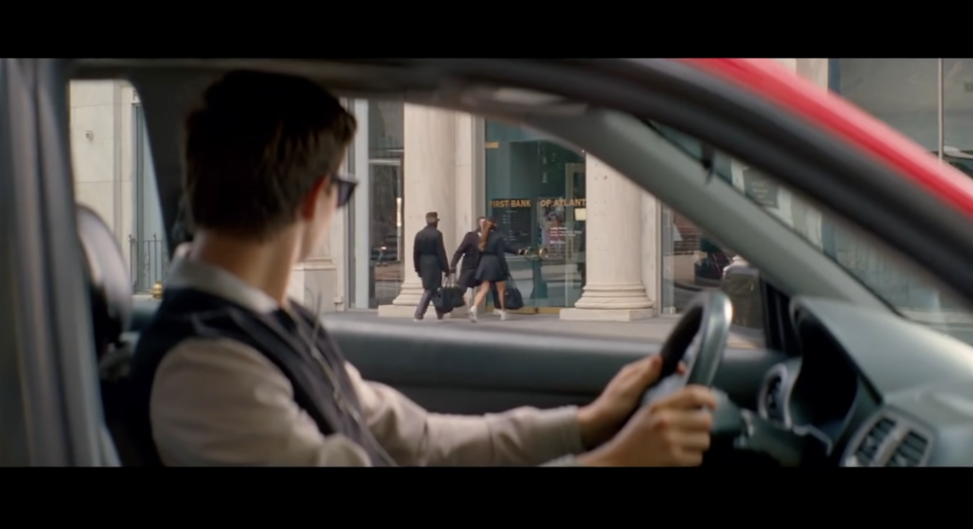Image Attribution: “Action – Assignment 4” by Nicole Favron is licensed under CC0. (See interactive map)
Part A: Action – Baby Driver
One of my favourite action movies to date is Baby Driver, the 2017 action/thriller directed by Edgar Wright. With a budget of $34 million United States dollars, the movie grossed $226.9 million worldwide. The movie is just under two hours, and follows our protagonist, Baby, as he works as a getaway driver in a heist that is doomed to fail.
The scene that I will be analyzing for this assignment is the opening sequence of the movie. In this defining scene, we are introduced to the main character Baby, as well as the world he lives in. This information is delivered to the audience without exposition or dialogue; Edgar Wright does this by setting up the first scene very carefully. Wright uses what the audience sees and hears to give us the first clues; the viewer sees a bank, before the image is obscured by Baby’s red Subaru which fills the screen, highlighting its future importance. With any pre-existing knowledge of the film’s plot, the viewer can gather at this point that there will be a robbery and eventual getaway. The next thing we see is Baby’s iPod choosing music, and this is established as a key component to the movie. We find out later that Baby suffers from hearing issues that he drowns out with music, so the music is not just for the audience – we hear what Baby hears. Another key element of this is that the images on the screen are subordinate to the sounds and the musical soundtrack that the audience hears. The slamming of car doors, footsteps, and even other noises from the streets synchronize with the music. This stylistic choice propels the rest of the movie’s story. After a wide shot is used to show Baby separated from the robbery taking place, the criminals hop back into baby’s car to begin an action-packed car chase. The chase only lasts around three minutes, and in this time, Wright uses many short shots put together to illustrate the action taking place. These short cuts help to highlight the speed and urgency of the chase, and act as more of a musical montage that uses the song to propel the scene. A lot of the car chase is filmed from inside the car to highlight the importance of Baby’s relationship with driving, and this theme carries from this first sequence and into the rest of the movie.
The musical score in Baby Driver is one on the most interesting aspects of the film. This music is full of tempo changes, breakdowns, and loud and quiet parts. “Pop scores—designed to be heard, or paid attention to, that is, in a way that Hollywood’s orchestral scores of the studio era arguably were not— depend on broader social and cultural contexts in order to work on and for their audiences” (Howell 5). In Edgar Wright’s case specifically, “visual and aural formal flourishes emphasize each other, allowing sound to enhance, reinforce, and supplement the stylistic norms of editing and cinematography that currently characterize global entertainment cinema” (McQueen 143) I hope to see Wright inspire more movie directors to enter production with sound-conscious objectives.
Works Cited
Howell, Amanda. Popular Film Music and Masculinity in Action: A Different Tune, Routledge, New York, 2015.
McQueen, Amanda. “‘Bring the Noise!’ Sonic Intensified Continuity in the Films of Edgar Wright.” Music, Sound, and the Moving Image, vol. 7, no. 2, 2013, pp. 141–166., https://doi.org/10.3828/msmi.2013.7.
